Root, Flat 3rd and Flat 5th
The E diminished triad is formed of the 1st, flat 3rd and flat 5th of the E major scale.
- E – root note
- G – Minor 3rd above the root
- Bb – diminished 5th above the root
Here is the triad written on the staff in the treble and bass clef.


E dim Triad on Piano
Below you can see how to play this triad on the keyboard or piano. This pattern of notes could also be played starting on any E note.
However, the order of the notes must be the same:
- E – lowest note
- G – middle note
- B flat – highest note
This is called ‘root position’.

E diminished Triad on Guitar

1st Inversion
- G – min 3rd (lowest note)
- Bb – dim 5th (middle note)
- E – root note (highest note)

1st inversion on Piano
On the piano we can play the 1st inversion of a E dim triad by starting on a G. They play the Bb above and the E above this.
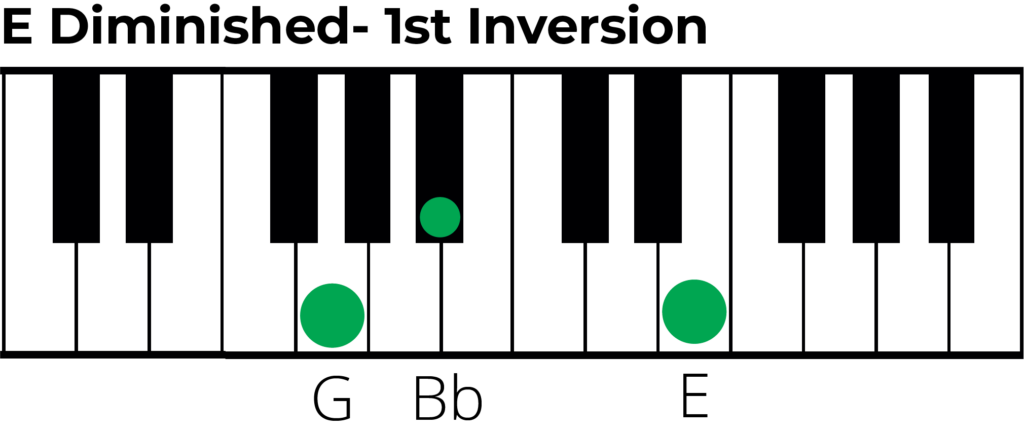
1st Inversion of Guitar
Below are the most common shapes for playing an E dim triad in the 1st inversion. Remember that we can only use certain shapes are the pitches of the three notes are important.
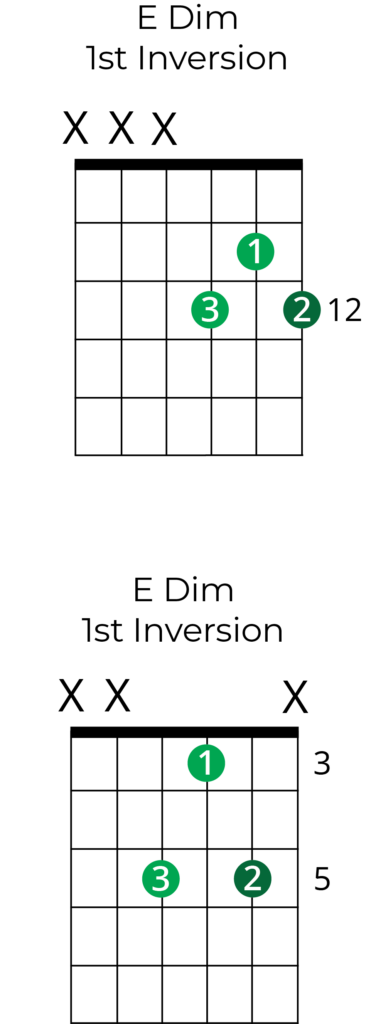
2nd Inversion
A 2nd inversion is where we take a triad but we start on the third note, which in this case is B flat. We play the E above then the G becomes the highest note in the chord.
- Bb – dim 5th (lowest note)
- E – root note (middle note)
- G – min 3rd (highest note)
We could construct a 2nd inversion starting on any Bb note in any octave. The only thing that must stay the same is that the we use the E above and the G above that.

2nd inversion on Piano
On the piano we can play the 2nd inversion of an E dim triad by starting on a B natural. They play the E above and the G above this.
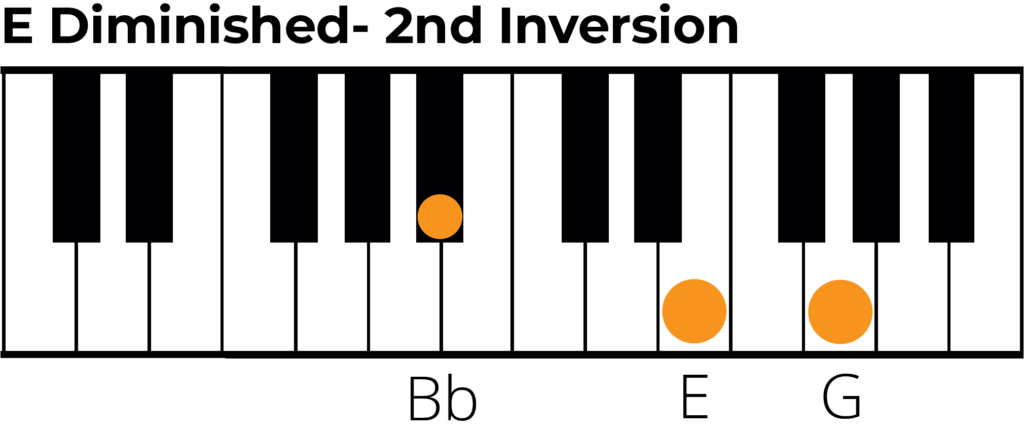
2nd Inversion of Guitar
Below are the most common shapes for playing an E dim triad in the 2nd inversion. Remember that we can only use certain shapes are the pitches of the three notes are important.
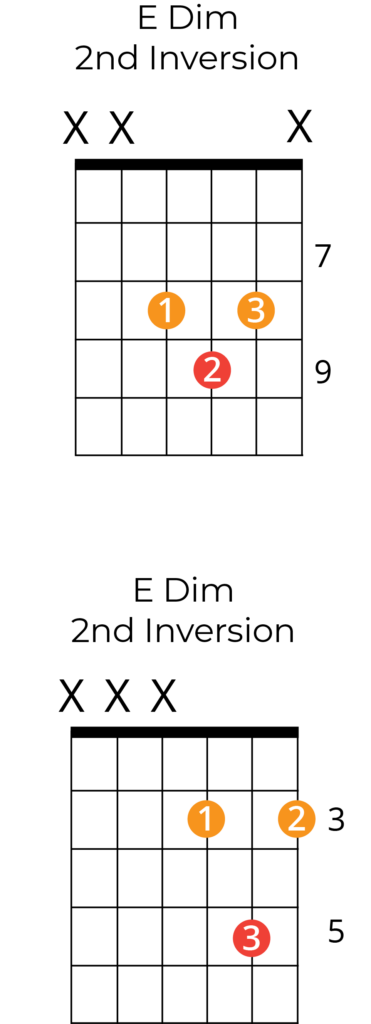
What different types of triad are there?
There are several different types of triads that we can create for the major scale:
- Major Triad– This is formed with the 1st, 3rd (major 3rd) and 5th (perfect fifth) of the major scale. The E Major triad is E, G# and B.
- Minor Triad– This is the same as the major triad, except instead of a major 3rd we have a minor 3rd. The E Minor triad is therefore E, G, B.
- Diminished Triad – To create the diminished triad start with the 1st (E), then minor 3rd (G) then a diminished 5th (B). A Diminished 5th interval is a half-step (semitone) smaller than a perfect 5th.
- Augmented Triads– This triad starts with the 1st degree of the scale (E), followed by major 3rd (G#) and augmented 5th (B). An augmented 5th interval is a half-step (semitone) larger than a perfect 5th.
Keys that Include E Dim Triad
You might be asking – what key do you find E diminished chords in? Well, as you can see below, E Dim is the second chord in the key of D minor.

It is also the 7th chord in the key of F Major.

Famous Songs That Use Diminished Chords
When played in isolation, diminished chords have a distinctly dissonant sound. But this chords come into their own when seen as part of a chord progression. In the right progression, diminished chords at so much character and interest to a song.
Here’s 4 popular examples of diminished chords in action.
‘don’t Look Back in Anger’ – Oasis
The song is in C major and the bridge section moves from a G (the fifth chord in the key) and an Amin (the 6th chord in the key).
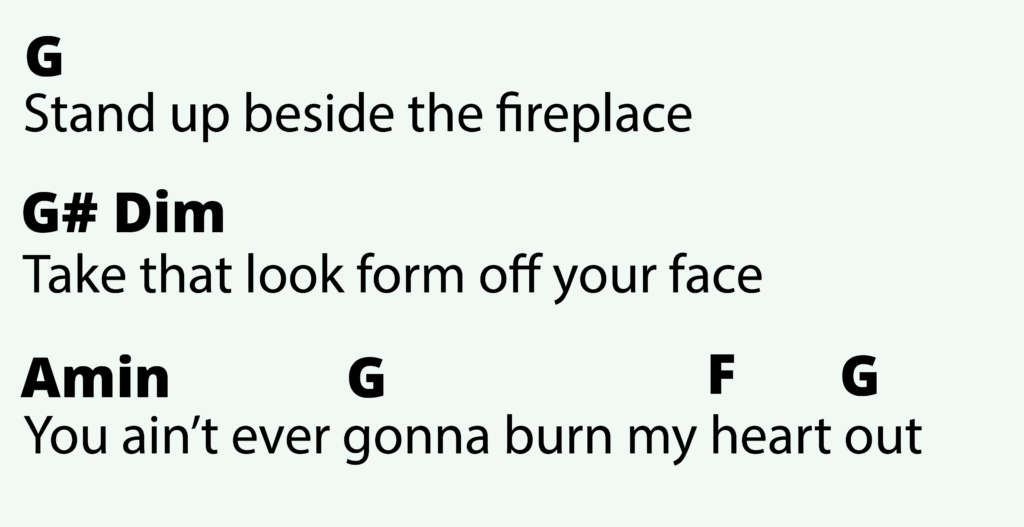
To make this transition more interesting, Noel Gallagher starts on G major then moves to G diminished before moving to the Amin. This provides some tension (the G dim) and release (the A Minor) give the bridge a more satisfying feel.
‘Bennie And The Jets’ – Elton John
In ‘Bennie and the Jets’ Elton John used a G diminished chord to move between the tonic chord (G) and the 2nd chord (Amin)

This gives a smooth transition that is more interesting that simply staying on the G major before moving to the A minor chord.
‘Bridge Over Troubled water’ – Simon & Garfunkel
In the chorus of ‘Bridge Over Troubled Water’, Simone and Garfunkel use a F#dim/A to give a sweet resolution to the tonic chord of Eb major.
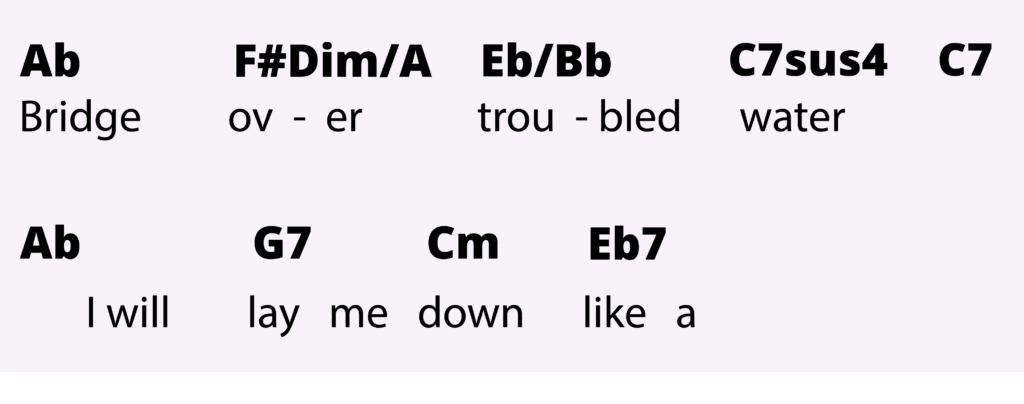
‘This love’ – Maroon 5
The hook to this song has clever used a Ddim7 chord which then resolves to the G/D chord.
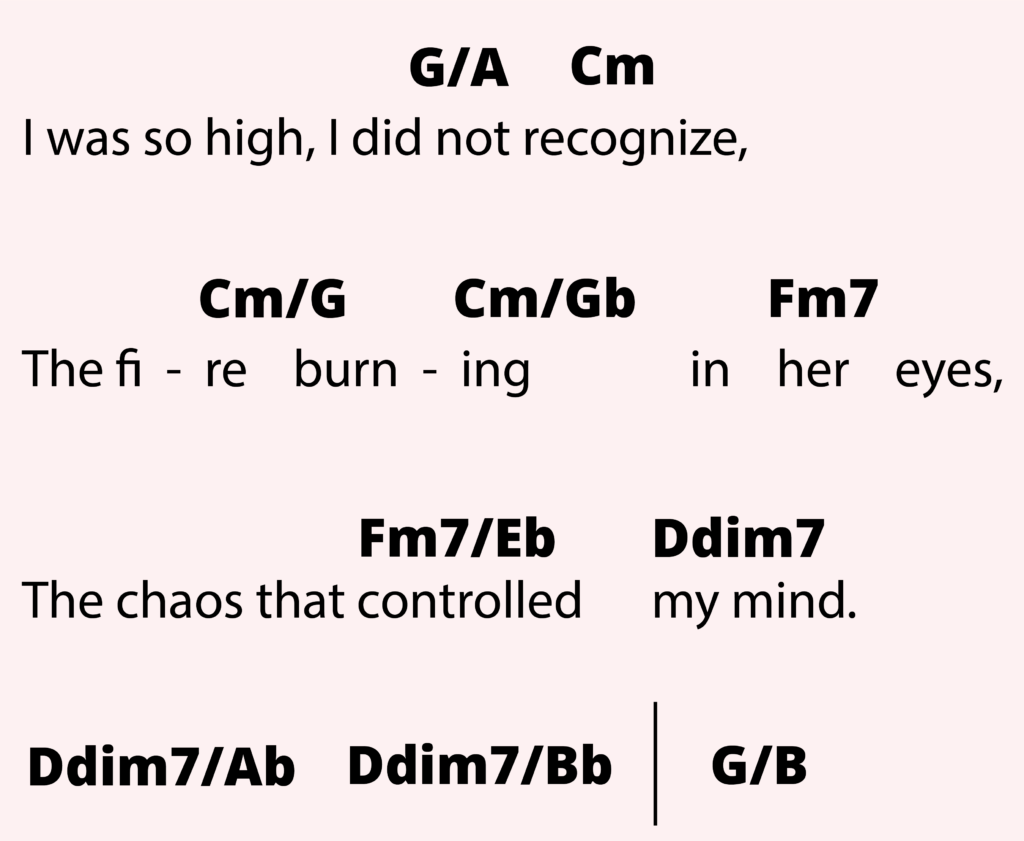
The funky addition notes added to the chords give a stepping movement that adds to the catchiness!
What’s next….?
- Learn how to construct the E Major triad
- Swat up on your chord knowledge with our complete guide to chords.
